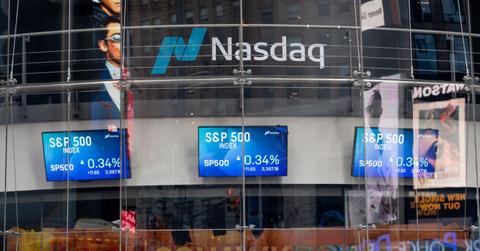What Are the Best S&P 500 ETFs for Investors in 2020?
The S&P 500 is the most popular index with approximately $4.6 trillion of assets indexed to it. What are the best S&P 500 ETFs for investors in 2020?
Sept. 9 2020, Updated 8:07 a.m. ET

Investing in ETFs and other passive investing instruments has gained traction over the last decade. Last year, the assets under passive investing surpassed those under active investing for the first time ever. Within the index investing space, the S&P 500 is the most popular index with approximately $4.6 trillion of assets indexed to it. So, what are the best S&P 500 ETFs for investors in 2020?
What ETFs are indexed to the S&P 500?
Many ETFs track the S&P 500 including leveraged and inverse ETFs. Leveraged ETFs take a leveraged bet on the underlying. The gains and losses are higher than the underlying. In the case of an inverse ETF, the returns are inverse to the underlying. If you are bearish on the U.S. stock market, you can invest in one of the inverse S&P 500 ETFs. The ProShares UltraShort S&P 500 ETF is among the inverse S&P 500 ETFs.
There are four main S&P 500 ETFs with the AUM (asset under management) exceeding $50 million.
- the SPDR S&P 500 ETF
- the iShares Core S&P 500 ETF
- the Vanguard S&P 500 ETF
- the SPDR Portfolio S&P 500 ETF
To choose the best ETF, you need to strike a balance between costs, liquidity, and the fund size. So, which is the best S&P 500 ETF?
Best S&P 500 ETF
The SPDR S&P 500 ETF is the largest ETF tracking the S&P 500. The ETF has an AUM of almost $300 billion and a three-month average volume of over 76 million shares. However, the SPDR S&P 500 ETF's expense ratio of 9 basis points is higher than its peers. The fund is the oldest ETF tracking the S&P 500 and was commissioned in 1993.
The iShares Core S&P 500 ETF is the second-largest ETF tracking the S&P 500 with an AUM of $215 billion and a three-month average volume of 3.8 million shares. Earlier this year, BlackRock slashed the fees on the ETF by 1 basis point to 3 basis points. The ETF looks the best play for retail investors with its low fees and reasonably high liquidity. The iShares Core S&P 500 ETF was commissioned in 2000.
The Vanguard S&P 500 ETF is the third-largest ETF that tracks the S&P 500. It has an AUM of $162 billion, while its average three-month volume is 3.6 million shares. The fund has an expense ratio of 3 basis points. The Vanguard S&P 500 ETF has been in existence since 2010.
The SPDR Portfolio S&P 500 ETF has an AUM of 6.5 billion and a three-month average trade volume of 2.8 million. The fund's expense ratio is 3 basis points, which is one third of the SPDR S&P 500 ETF. The SPDR Portfolio S&P 500 ETF was commissioned in 2005.
The S&P Index is the most appropriate benchmark for the U.S. stock market. This year, Berkshire Hathaway’s annual shareholder meeting was held virtually due to the coronavirus pandemic. Chairman Warren Buffett advocated investing in the S&P 500. He said, “Get a cross-section. And in my view, for most people, the best thing to do is to own the S&P 500 index fund.” Berkshire Hathaway also owns S&P 500 ETFs. In the fourth quarter of 2019, Berkshire Hathaway brought shares in the SPDR S&P 500 ETF and the Vanguard S&P 500 ETF.
